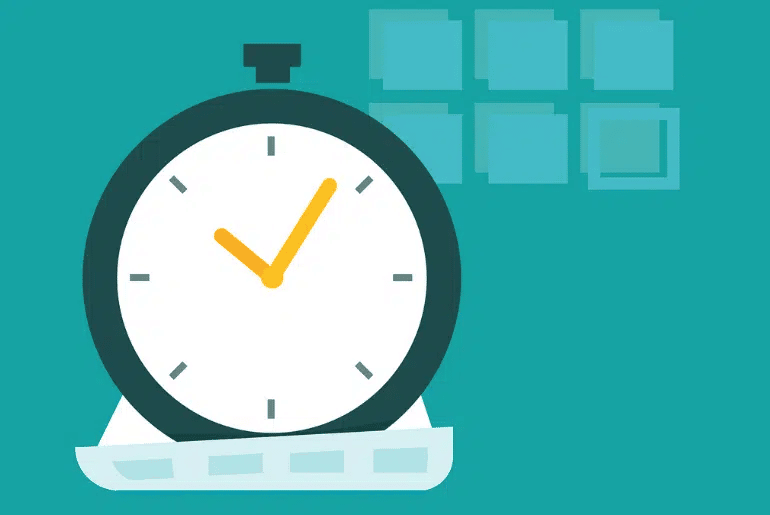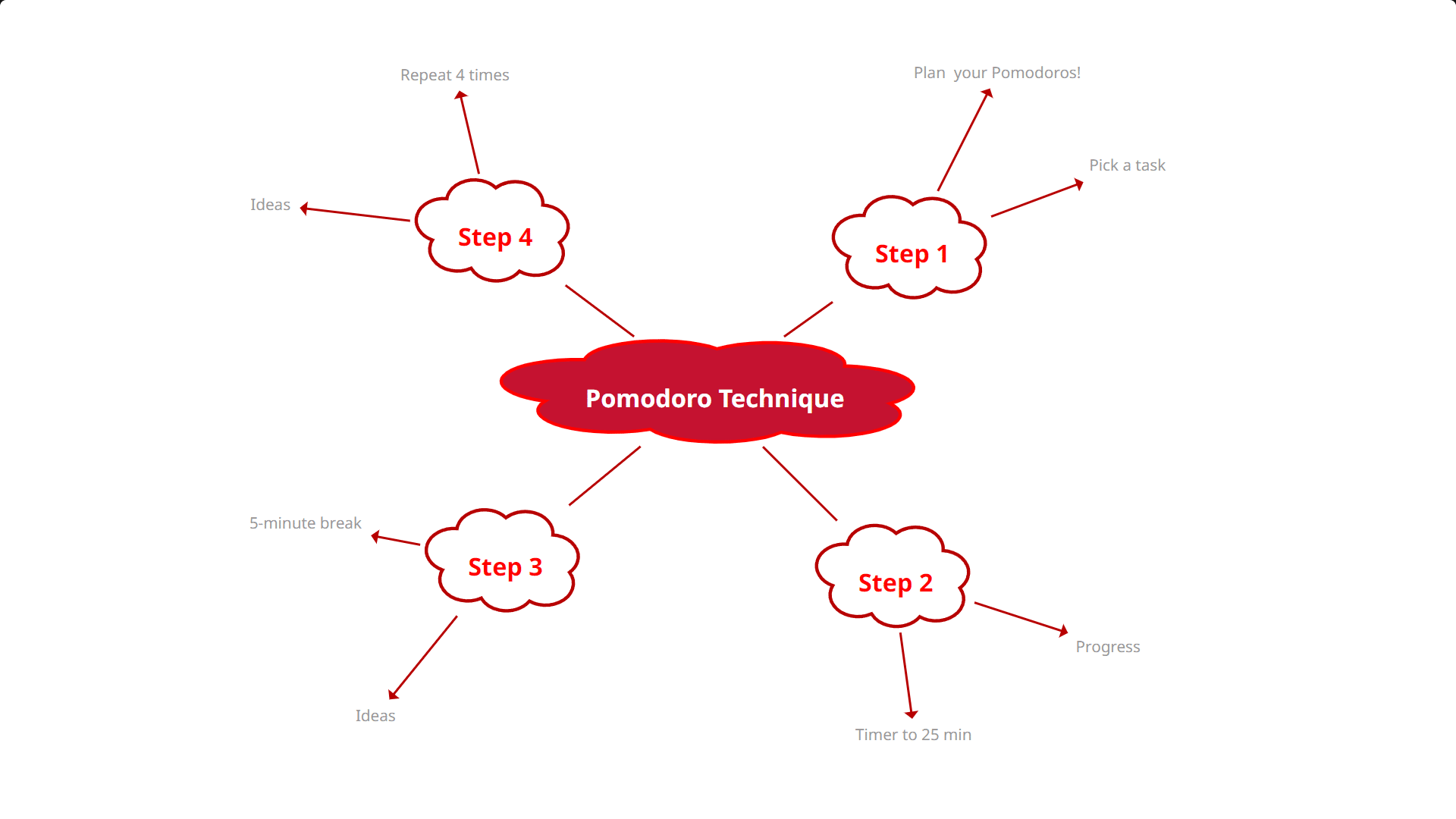
Time is a very valuable resource. It can neither be bought, nor borrowed, nor saved for later. You can only learn to plan it efficiently to get the most out of it. Time management is not just a skill. It is the skeleton holding your success. Lack of time is often a major obstacle to the full implementation of ideas. Of course, you can find many books and courses devoted to time management. But the irony is that busy people can rarely find the time to read thick books or attend training sessions. So in this article, we will tell you about the most forceful productivity tips that helped many people effectively arrange their everyday workflow.
The Pomodoro Technique
This time management method is very simple. Its author is Francesco Cirillo. Being a student, he noticed that he had low productivity despite the high load. So Francesco worked out his method to improve his efficiency. He worked during fixed periods of time and alternated them with some relaxation. To control the process, Cirillo used a tomato-shaped kitchen timer. Hence the name “Pomodoro technique”. The goal of this approach is the correct organization of work and rest.
You should visualize your total working time as a tomato and divide it into several segments lasting 20-30 minutes – you decide the time yourself. During this period, it is vital to work on the main task only without distraction. Then, it is time for a 5-minute break. If you cope with four of such cycles, allow yourself a 15-minute rest. For example, you want to improve your English, but you don’t have time for this in your daily schedule. Think about spending your 30 minutes breaks in your working time in offline class with a Preply English Tutor to distract yourself and spend time with benefits for yourself.
This time arrangement will allow you to complete most of the tasks in 2-3 hours and not to spend a whole working day on it. One of the best ways to use this technique is using the best mind map app.

The Eisenhower Matrix
This planning technique is based on task prioritization. It allows you to carry out planned tasks correctly and timely. The basis of the Eisenhower approach is to learn to divide all tasks by urgency and importance. The template consists of 4 categories and you need to decide what category the upcoming job belongs to.
- Urgent and important tasks. Here you need to list priority matters that need immediate attention and have approaching deadlines.
- Not urgent but important tasks. These are also vital things not to forget but they are usually not so urgent.
- Urgent but not important tasks. These things may be minor and not influence long-term goals, but should be dealt with without delays. Such tasks can be delegated to your subordinates.
- Not urgent and not important tasks. Here you can list things that will not affect your goals today and tomorrow. Often, such tasks may be left undone for a long period without any harm to your productivity.
When you do the Eisenhower Matrix for the first time, try to create a mind map online using a predefined template. It’s specially designed to guide you step by step, this way being easier for you.
ABC Analysis
This planning method is based on the percentage of the most important and least important things. All tasks are divided into three classes depending on their importance:
A. The most important things, which make up 15% of the total number of tasks and their contribution to the achievement of goals is 65%.
B. Important tasks – 20% of the total number, these account for 20% of achieving the goal.
C. Less important tasks are equal to 65% of their total number, and their importance is 15%.
To benefit from the ABC analysis approach, you need to do the following:
- make a list of all future tasks;
- categorize and prioritize them;
- evaluate tasks, respectively, in categories A, B and C;
The GTD (Getting Things Done) Principle
This technique was created by David Allen. He believed that the brain should be freed as much as possible from memorizing unnecessary information, which, in fact, includes things for the day, week, month. The author suggests transferring all the things you have to complete to an external medium, a diary, for example. It will devoid you of the need to memorize unnecessary things and allow you to concentrate on the main thing. The main rules are:
- Do not keep everything in your head. It is the key idea of this planning technique. Everything needs to be recorded, including small tasks that seem unimportant.
- Opt for simplicity. You need to record and organize information in a way convenient for you. It can be a notebook or task manager.
- Think about the solution. Sometimes you treat a task as a problem and forget to look for a solution.
- One task at a time. Multitasking is often your main enemy when it comes to efficient time distribution. You only need to think about the task you are doing now and put off other things to a later stage.
- Make an action plan. Tasks sketched in the task manager or calendar will not solve all problems. You need to develop an action algorithm for each of them. This will speed up the whole process.
The GTD time management system will work well for both busy executives and housewives. It is an approach to optimization of your brain work, allowing you to cleanse your thoughts from the unnecessary mental burden. Once you stop frantically remembering your duties and keeping in mind a lot of unfulfilled tasks and rash problems, you will immediately feel more energy, more potential for creativity and new ideas.
The “Eat the Frog” Technique
This method was invented by Brian Tracy who noticed that people tend to put off unpleasant tasks. There is an old French saying – if you have to eat a live frog the first thing in the morning, it can be comforting that it is the worst thing that can happen to you for the day. The same story is with all unpleasant tasks. The sooner they are completed, the better it is for you. So always put them first on your to-do list. If you have an unpleasant phone call, start the day with it. It will bring relief and kill your emotional stress.
Algorithm for identifying your “frog”:
- make a to-do list for a day or a week;
- remove everything unimportant from it;
- choose the most unpleasant or annoying task and put it in the first place in your plans;
If solving this takes time, you can also use the Pomodoro method.
You can use these 5 techniques to manage your time easier and make it your assistant. At the same time, remember that it is not an ultimatum list to follow. You can adapt it to your activities and preferences. Do not blindly use all of the time management tools. Test them to see what works best for you. And then implement the chosen technique in your everyday routine.
Author:
Stacey Wonder is a content marketer who enjoys sharing best practices for self-development and careers with others. In her free time, Stacey is fond of contemporary dance and classic French movies.






